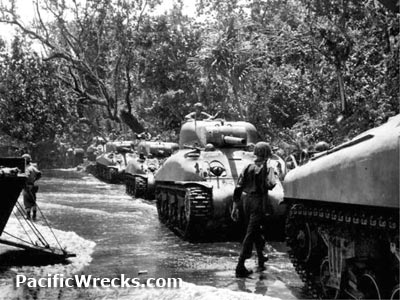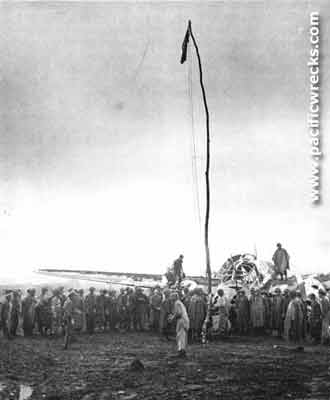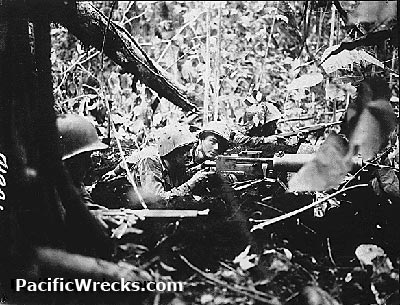Commentary by Justin Taylan
Mortar Training
Eugene Sledge has enlisted as a Marine and is seen training on the 60mm mortar, and being yelled at by the instructor for a short round. Yet, in Sledge's With The Old Breed he relates each Marine got to choose their specialty and mortar training was more relaxed than boot camp. On the first day of mortar school, he remembered that the instructor laughed when a Marine addressed him as "sir", and the sergeant says: "Address me as sergeant, not sir... Just relax, work hard, and do your job right, and you won't have any trouble. You'll have a better chance of getting through the war."
Cape Gloucester
On Christmas 1943, the 1st Marines are aboard transports eating a special dinner and singing carols. The next morning, they land at Cape Gloucester on the western tip of New Britain Island. The Marines fielded new weapons at Cape Gloucester including M4 Sherman tanks and small liaison planes for spotting. Most Marines rifleman carried M1 Garands instead of Springfield bolt action rifles. However, torrential rains and dense jungle negated their equipment advantages.
This landing was part of the Allied operation to isolate the main Japanese base at Rabaul, located at the eastern tip of the same island. Eleven days earlier, the US Army 112th Cavalry
assaulted Arawe to the
southeast as a diversion for the main thrust by the Marines landing at Cape Gloucester.
Dummy Gun Positions
The episode shows Marines passing a "dummy" anti-aircraft gun made from a tree trunk. Indeed, the Japanese established dummy positions at the airfield in an attempt to lure Allied bombing onto bogus positions. Observed from the air prior to the landing, these positions did not fool Allied observers who recognized them as fake.
Cape Gloucester Airfield
One of the first objectives of the landing was the seizure of Cape Gloucester Airfield. Although secured by December 30, the airfield had been bombed more than a hundred times prior to the landing. 'To Gloucesterize' became a phrase to describe a plastered target. In addition, heavy rains delayed repairs and friendly aircraft were not able to use the strip until February 1944. One prized captured at the airfield was an intact Ki-61 Tony 263. This new model of fighter plane was immediately shipped to the United States and evaluated by intelligence.
Rest on Pavuvu Island
Exhausted, the Marines are seen departing aboard transports bound for Pavuvu Island where they are camped in a tent city. Prewar, Pavuvu was a copra plantation with rows of palm trees in neat rows. Although the island was peaceful and less prone to malaria, it was universally remembered for two things: large land crabs that had a tendency to get into everything and the smell of rotting coconuts from the neglected plantation palms.
The episode concludes with Leckie recovering in a US Navy hospital on Banika Island. This nearby island was a major US Navy base area and airfield complex.
Return to historical commentary main page |

Marines with LVT at Cape Gloucester

M4 Sherman tanks on the at Cape Gloucester December 1943

"Dummy" anti-aircraft gun positions at the airfield
'
Flag raising at Cape Gloucester Airfield
December 30, 1943

Marines with 30 caliber machine gun in the jungle January 1, 1944

Marines on Pavuvu including Robert Leckie
|